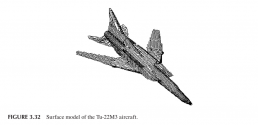Yes? That is literally what I said *at the very start* of this exchange...Yeah and i asked when the surface is curved am i supposed to break it into a box with mm width ? and is there any academic source ?
I have never seen a science paper that has needed to source the claim that "we cannot measure accurately this thing we're interested in because our instruments don't have enough sensitivity", and I have read a whole lot of science papers (where this kind of commentary is frequently brought up).If you ever write a thesis, you cannot answer with "it's basic science in school".



